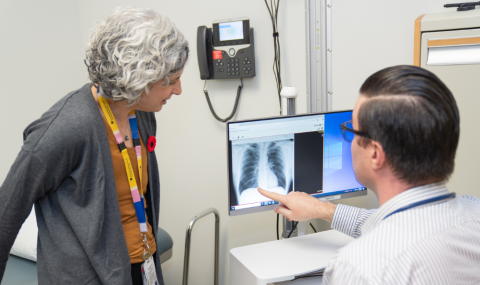What if my child has a fever, chills, perspiration, fatigue, weakness, and/or redness/tenderness/drainage around the PORT site?
Infection is the number one complication of PORTS since the device is something foreign to the body, is in place for a long period of time and used a lot.
It is very important to keep everything sterile (e.g., Do not touch the tip of the syringe) to prevent the entry of bacteria into the body.
What should I do?
If the reason for the fever is not known (e.g., your child does not have a red ear or throat) a blood sample will need to be taken from both the PORT and your child's arm.
*Notify the Nurse Practitioner or Medical Director at the Bleeding Disorders Program.
Why am I having trouble inserting the needle?
A PORT can be buried deep under the skin and may be hard to access.
Or, the needle may also have been inserted outside of the reservoir.
What should I do?
Did you feel or hear a "clunk" letting you know that you have hit the back of the reservoir? If not, remove the needle and with a new needle, try again.
Gently push on the needle to make sure that it goes to the bottom of the reservoir.
Place a pillow under your child's middle back to help bring the PORT closer to the chest wall.
A longer needle may need to be used.
If none of this works, notify the Nurse Practitioner or Medical Director at the Bleeding Disorders Program.
Why am I unable to flush the PORT?
The needle may not be down to the bottom of the reservoir or the clamp may not have been released.
What should I do?
Check and make sure that the tubing is not clamped.
Gently push down on the needle to make sure that it goes to the bottom of the reservoir.
A longer needle may need to be used.
Do not use force to flush the tubing.
If none of this works, notify the Nurse Practitioner or Medical Director at the Bleeding Disorders Program.
Why am I unable to get blood return?
The needle may not be down to the bottom of the reservoir.
Or, a tiny blood clot may have developed at the tip of the catheter.
Or, the child's position may be pushing the tip of the catheter against the wall of the vein.
What should I do?
Check to see if the tubing is unclamped.
Gently push down on the needle to make sure that it goes down to the bottom of the reservoir and then check for blood return.
Have your child lift his arms, move his head from side to side, take a deep breath, or change positions.
The needle may have slid off the edge of the PORT. Pull the needle up slowly but not out of the skin, then reposition the needle and push it in until you feel it touch the back of the reservoir. If the needle is pulled out of the skin, use a new needle.
If none of this works, notify the Nurse Practitioner or Medical Director at the Bleeding Disorders Program.



